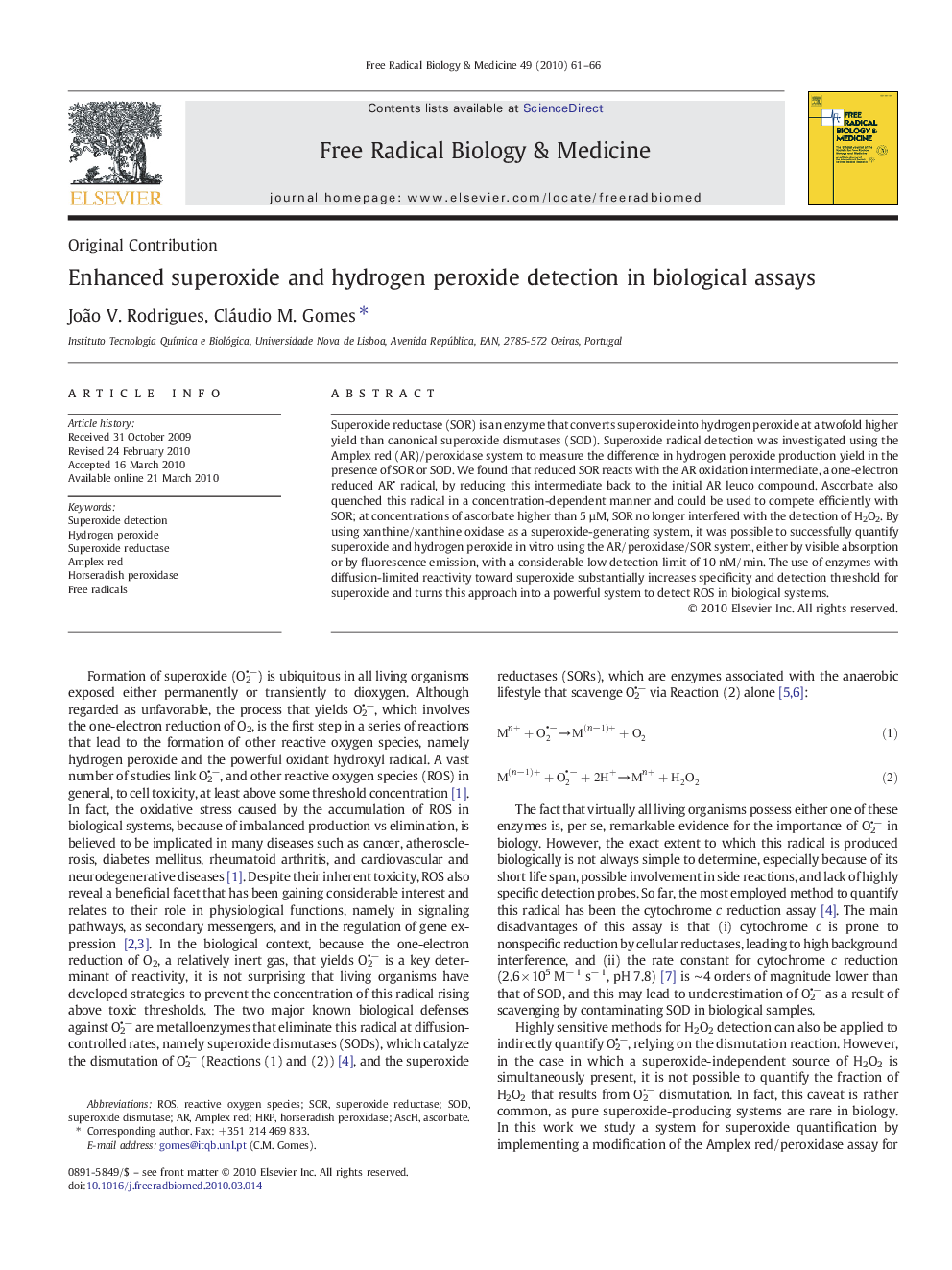| Article ID | Journal | Published Year | Pages | File Type |
|---|---|---|---|---|
| 1909417 | Free Radical Biology and Medicine | 2010 | 6 Pages |
Superoxide reductase (SOR) is an enzyme that converts superoxide into hydrogen peroxide at a twofold higher yield than canonical superoxide dismutases (SOD). Superoxide radical detection was investigated using the Amplex red (AR)/peroxidase system to measure the difference in hydrogen peroxide production yield in the presence of SOR or SOD. We found that reduced SOR reacts with the AR oxidation intermediate, a one-electron reduced AR• radical, by reducing this intermediate back to the initial AR leuco compound. Ascorbate also quenched this radical in a concentration-dependent manner and could be used to compete efficiently with SOR; at concentrations of ascorbate higher than 5 µM, SOR no longer interfered with the detection of H2O2. By using xanthine/xanthine oxidase as a superoxide-generating system, it was possible to successfully quantify superoxide and hydrogen peroxide in vitro using the AR/peroxidase/SOR system, either by visible absorption or by fluorescence emission, with a considerable low detection limit of 10 nM/min. The use of enzymes with diffusion-limited reactivity toward superoxide substantially increases specificity and detection threshold for superoxide and turns this approach into a powerful system to detect ROS in biological systems.
